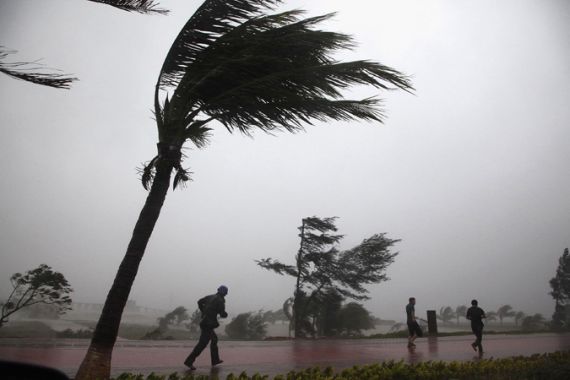The economics of extreme weather
The financial cost of bad weather around the globe

 |
| The big freeze across Europe hit Hamburg, Germany [GALLO/GETTY] |
Storms, tornadoes, floods, hurricanes, sandstorms, blizzards; there are few places on earth which do not, at some time or another, experience the full force of Mother Nature.
Whilst, quite rightly, loss of life is of greatest concern and headline grabbing, the economic impact of these events should not be overlooked.
Keep reading
list of 4 itemsTurtles swimming to extinction in Malaysia as male hatchlings feel heat
Could shipping containers be the answer to Ghana’s housing crisis?
Thousands protest against over-tourism in Spain’s Canary Islands
The residents of Dallas-Fort Worth, Texas may have initially counted their blessings earlier this month. They escaped any loss of life or serious injury after two massive tornadoes tore through heavily populated areas, tossing huge eighteen-wheeled trailers through the air like so many children’s toys.
Once the dust settled, however, the material destruction became clear. As residents picked through the wreckage of their homes, trying to salvage personal possessions, insurers began to compile estimates of the total losses they were likely to have to bear.
An early figure of $500 million may seem enormous, but the U.S. has already seen far worse this year.
An outbreak of tornadoes across the Midwest in March caused $2 billion worth of damage and the total across the US in just over three months this year stands at $3.5 billion.
That figure does not, of course, take into account the loss of trade to businesses affected or the economic contribution of the people who lost their lives – at least 58.
These are shocking figures but they only relate to tornadoes in the US. Severe winter weather which paralysed much of Central and Eastern Europe during January and February claimed 824 lives and cost the region an estimated $660 million.
Across Europe as a whole, the unusually severe weather cost around $1.2 billion. This comes at a time when many states are struggling to deal with severe economic debt crises.
The most devastating weather events are not necessarily of great measurable economic significance. Tropical cyclones may kill hundreds of people across the Pacific and Indian Oceans, but countries such as Mozambique, Malawi and the Philippines are economically poor.
Whilst the economic infrastructure of these countries may be decimated by such storm systems, the cost of repair and replacement will often be low because they are not highly developed.
Contrast this with the greatest economic weather disaster – Hurricane Katrina, which slammed into the U.S. Gulf Coast on 29 August 2005. Hitting such a highly developed area as New Orleans meant that insured losses were around $35 billion and total economic losses were estimated at $125 billion.
All of the above highlight the necessity of accurate and timely weather warnings and predictions. Much loss of life can be prevented, or at least minimized, by issuing appropriate warnings. Residents can be evacuated, rivers sandbagged; property and vehicles moved etc.
The UK Met Office is a state-funded organization. Part of its Public Weather Service duty is to ‘help protect life and property’. A report on the value of weather forecasts found that accurate warnings and forecast could save the country some $575 million annually. This figure is a combination of property savings, efficiency gains and lives saved. (The report calculated the economic ‘worth’ of a person to be $2.36 million.)
Alas, whilst a highly developed country such as the UK can adapt and take action in the case of extreme weather events, many other countries are unable to do so.
Poor island states, lying in the path of a massive typhoon or hurricane, can to little more than hope and pray that they will not be badly affected.
Extreme weather may happen far, far away from where we live but in a global economy its impact can reverberate around the globe. Weather costs all of us.